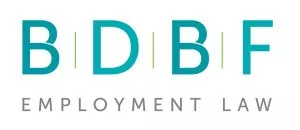The much-anticipated online database of Employment Tribunal judgments is now live, meaning that employees suing their former employer and employers being sued can now be identified by journalists and prospective new employers much more easily. This will make some claimants think twice before taking a case to trial and some employers will also feel more hesitant about going the full distance.
The database remains a work-in-progress, but at the time of writing there are already 7 pages of judgments publicly available in full.
The judgments available so far seem to be final judgments as opposed to judgments on preliminary hearings, and it is not clear whether that will change as more are added.
An interesting feature of the database is that the search function not only searches against the title of the case, i.e. the names of the Claimant and Respondent, but also text within the judgment itself. This means that any names mentioned within a judgment may also be picked up.
This new feature has a variety of potential implications for both individuals and employers.
From an individual's perspective, the prospect of having a judgment on the internet which can be readily searched for by potential new employers may pressurise them to settle, or to avoid litigating in the first place. Even if an individual's claim is upheld, it is possible for certain unflattering details about their behaviour to remain in the judgment and the very fact that they have brought proceedings at all will put many employers off paying them. It is conceivable that this could have a chilling effect on the number of claims.
As a company, this is an obvious source of bad press. Any bad behaviour will be available for all to see, and potential new employees may even search for their prospective employer before applying for a job in the first place. In discrimination or whistleblowing detriment cases, it is not unusual for staff of the employer to be named as individual Respondents. This adds an additional layer of pressure, as senior mangers' professional reputations could also be at stake.
Another important factor for companies is the use of confidential information. Whilst tribunal judgments have always been theoretically public (in the sense that Employment Tribunal hearings are held in public and there was a database of judgments available for inspection in Bury St Edmunds), the full text of a judgment has never been so readily accessible by so many people. Any confidential evidence which makes it into the judgment will now be out in the world at large, and this is an additional risk to consider. To circumvent this issue, it may be that employers begin applying to tribunals to ask that such details are kept in a confidential schedule to the judgment, or something similar.
That said, it is still early days for the database and its practical impact remains to be seen.
The content of this article is intended to provide a general guide to the subject matter. Specialist advice should be sought about your specific circumstances.


